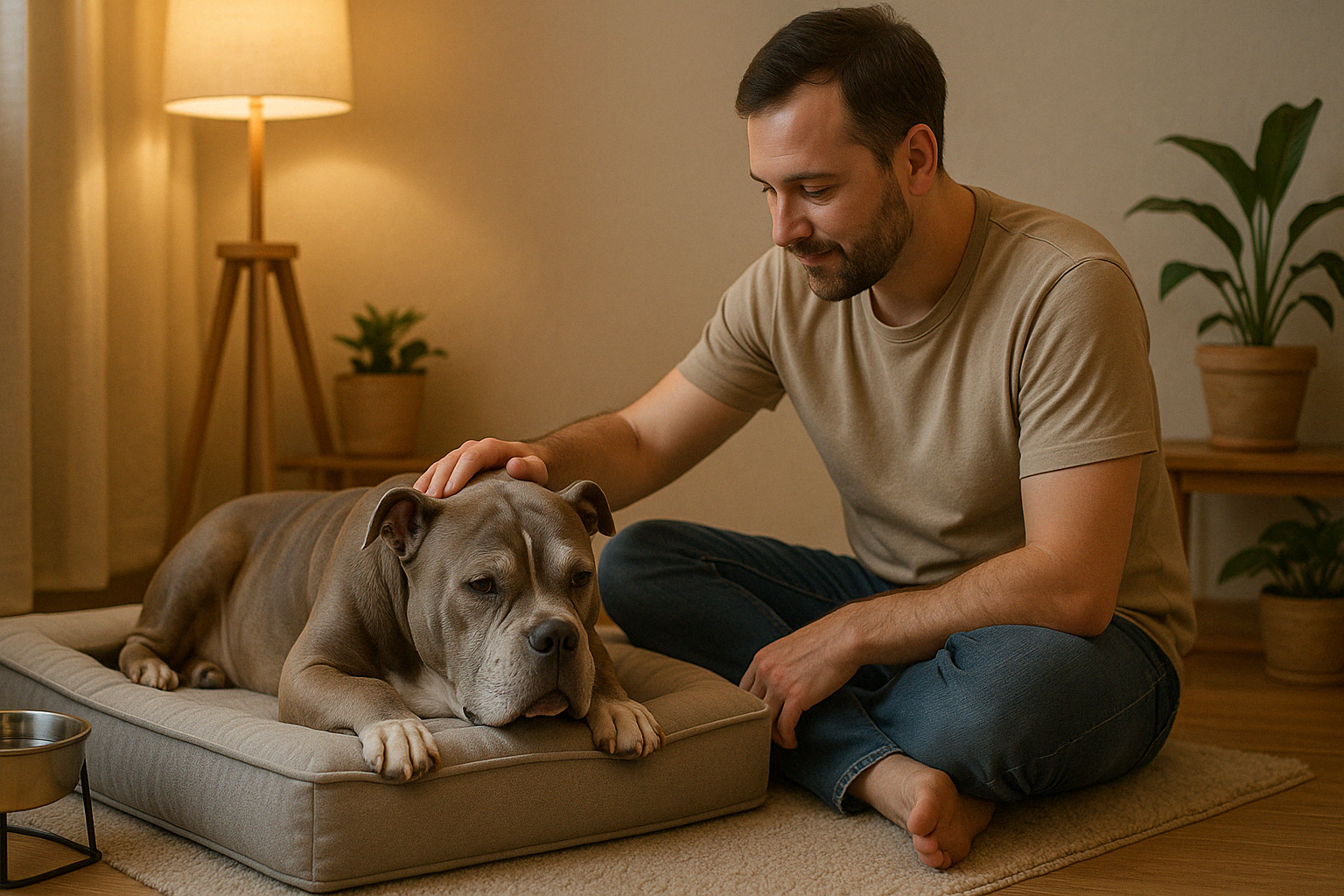Understanding Senior Status
Dogs enter their senior years at different ages depending on size and breed. Large and giant breeds (e.g., Great Danes, Labrador Retrievers) are typically considered seniors at around seven years. Medium breeds (e.g., Border Collies, Cocker Spaniels) reach senior status between eight and ten years. Small and toy breeds (e.g., Chihuahuas, Shih Tzus) often become seniors at ten to twelve years. Aging reflects changes in physical and mental condition more than a specific birthday.
Recognizing Signs of Aging
Watch for these common indicators:
- Gray hair around muzzle and eyes
- Stiffness or slower rise and movement
- Reduced playfulness and energy
- Weight gain or muscle loss
- Cloudy eyes or vision decline
- Hearing loss
- Changes in appetite or digestion
- Increased sleep and napping
- Behavioral shifts such as confusion or anxiety
Any sudden or severe changes warrant prompt veterinary assessment.
Veterinary Care and Senior Screenings
Schedule biannual veterinary visits to detect age-related conditions early. Discuss these screenings:
- Chemistry panel for liver, kidney, and thyroid function
- Complete blood count and urinalysis
- Dental examination and cleaning
- Blood pressure measurement
- Imaging (X-rays or ultrasound) for joints or abdominal concerns
Report any subtle changes in behavior, appetite, or elimination—even minor issues can signal developing problems.
Nutrition and Weight Management
Senior dogs’ metabolisms slow, and nutritional requirements shift. Transition to a senior-formulated diet that provides:
- Reduced calorie density to prevent weight gain
- Added fiber and probiotics for digestive support
- Joint support nutrients such as glucosamine and chondroitin
- Heart-healthy omega-3 fatty acids and taurine
- High-quality protein to preserve lean mass
Portion control is essential. Measure each meal with a standard cup and follow your veterinarian’s calorie recommendations. If your dog has specific conditions (kidney disease, cancer), a prescription diet may be indicated.
Exercise and Mobility Support
Regular, low-impact activity maintains muscle tone, joint flexibility, and mental well-being. Adapt exercise to your dog’s abilities:
- Short, frequent walks instead of long outings
- Slow leash walks on soft surfaces
- Swimming or hydrotherapy sessions
- Indoor scent games and food-dispensing toys
Avoid high-impact activities such as jumping or running on hard terrain. Support joint comfort with nonslip rugs, orthopedic beds, and ramps or pet stairs to access furniture.
Pain Management and Joint Health
Arthritis affects many senior dogs. Look for:
- Stiffness after rest or reluctance to climb stairs
- Limping or changes in gait
- Licking or chewing joints
Treatment options include:
- Prescription joint supplements (glucosamine, MSM)
- Nonsteroidal anti-inflammatory drugs (vet-prescribed only)
- Acupuncture or laser therapy
- Weight management to ease joint load
Never give human pain relievers; many are toxic to dogs.
Cognitive Health and Enrichment
Canine Cognitive Dysfunction resembles age-related cognitive decline in humans. Watch for:
- Disorientation or pacing at night
- Forgetting previously learned commands or house training
- Staring into space
- Changes in social interaction
Promote brain health by:
- Maintaining consistent routines
- Providing interactive puzzle toys
- Offering gentle training sessions
- Discussing cognitive support supplements (SAM-e, omega-3s) with your vet
Grooming and Skin Care
Senior skin and coat require extra attention:
- Brush gently and regularly to distribute natural oils
- Use moisturizing, hypoallergenic shampoos
- Trim nails more often to prevent discomfort
- Clean ears and teeth as part of routine care
- Monitor for skin lumps or sores during grooming
Home Modifications for Safety and Comfort
Enhance your home environment:
- Place orthopedic beds in quiet, accessible areas
- Lay down runners or rugs on slippery floors
- Install ramps or pet stairs for elevated surfaces
- Raise food and water bowls to reduce neck strain
- Use nightlights for dogs with declining vision
Managing Incontinence and Bathroom Needs
Urinary incontinence or changes in elimination can occur. Support your dog by:
- Scheduling more frequent potty breaks
- Using washable dog diapers or waterproof bedding
- Keeping outdoor areas easily accessible
- Consulting your vet about medications for bladder control
Respond with patience—avoid scolding and focus on comfort and medical solutions.
Emotional Support and Quality Time
Senior dogs often seek closer connection with their guardians. Foster emotional well-being through:
- Calm bonding activities such as gentle petting or massage
- Short cuddle sessions in their favorite spots
- Soft vocal reassurance and consistent routines
- Inclusion in family life at a comfortable pace
End-of-Life Planning and Compassionate Care
Part of senior care involves preparing for your dog’s final stage with dignity and comfort. Watch for:
- Uncontrolled pain despite treatment
- Loss of interest in food or activities
- Inability to rest comfortably or move without severe distress
- Signs of confusion or anxiety outweighing quality of life
Discuss hospice care, pain management, and at-home euthanasia options with your veterinarian. Ensuring your dog’s comfort and peace is the greatest gift you can offer at this stage.
Final Thoughts
Caring for a senior dog is a journey of deepened companionship and gratitude. By proactively addressing health, mobility, and emotional needs, you ensure your beloved pet enjoys comfort and happiness in every golden year. Aging together is a testament to the bond you share—one that grows stronger with each gentle step.

